If you are going to raise and own goats, you need to have clean, fresh water available to them. This is our journey of creating a fresh water source for our pygora goat herd.
When preparing to bring goats to our farm I knew we needed a plan for water. The water that came from our house tap was in my opinion too far away to walk with buckets or jugs to the pole barn every day. What exactly would we do when it turned cold? More realistic, what would our plan be when it turned frozen outside with temps dipping below zero?
I convinced Denny that having water in the pole barn, close to the pole barn and available for an automatic waterer was what we absolutely had to have.
What did I know about installing water?
Not much.
From my real estate experience, my teachers talked about sellers are somehow somewhere advised by the all-knowing real estate genie to interview 3 agents before selecting the ONE.
We only interviewed 3 contractors that could get us water to our pole barn simply because we knew NOTHING about the process or what the cost would be.
We started getting ideas of costs months before. Winter had passed and in another month we would be going to get our goats.
We kept checking on what the cost of water connected to our barn would be. As the cost seemed crazy high we kept asking neighbors, friends, people we didn’t know all about their suggestions of getting water to the pole barn.
Denny was not happy about spending this amount of money upfront. He started negotiating with me similar to the small $300 chicken coop purchase we had made when we first decided to get chickens. I recall him saying “Let’s start small”. So we purchased our 6 chickens and the $300 coop. The coop was no coop to take a chicken through an ND winter so we brought the coop inside our garage.
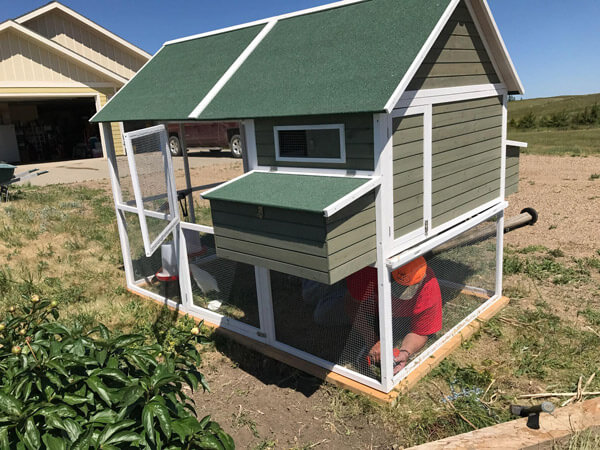
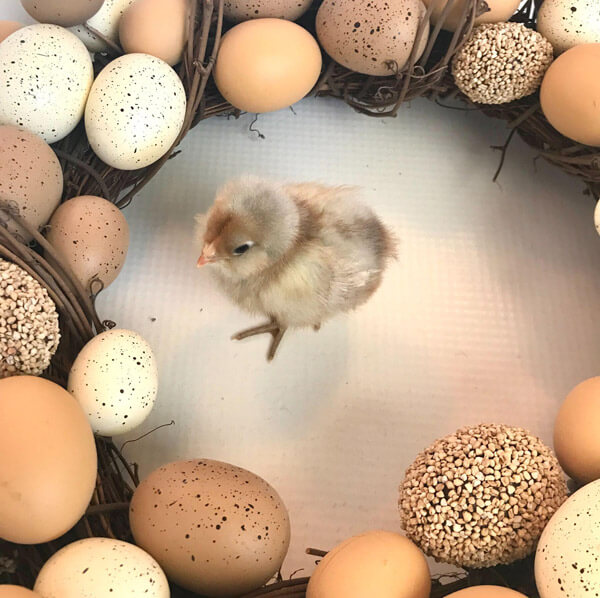
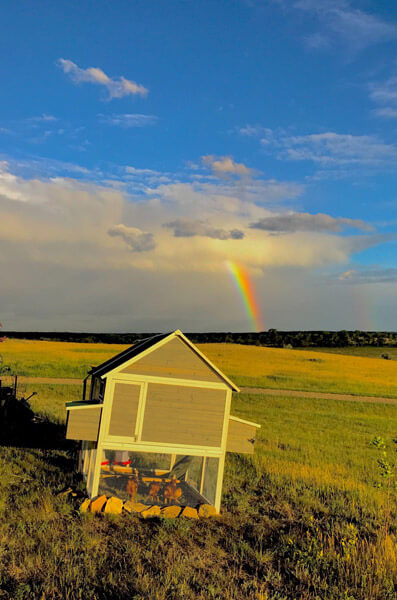
Mice thought was it was a bed and breakfast for them and when we went on our 3 week trip to Hawaii in December -January our house sitter knowing we had Geo-Thermal heat for the house deducted that keeping the garage door open to the house would somehow be a good idea.
The mice thought so too! By the time I had rid the house of the mouse infestation I had purchased live traps, sticky traps, wooden snap traps, you name it traps. The number was over 40 by the time I stopped counting. I remember laying every article out on the dishtowel-covered floor after I disinfected it before returning it to the pantry.
NEVER again are we setting up for animals without having the setup work in North Dakota winters!!!
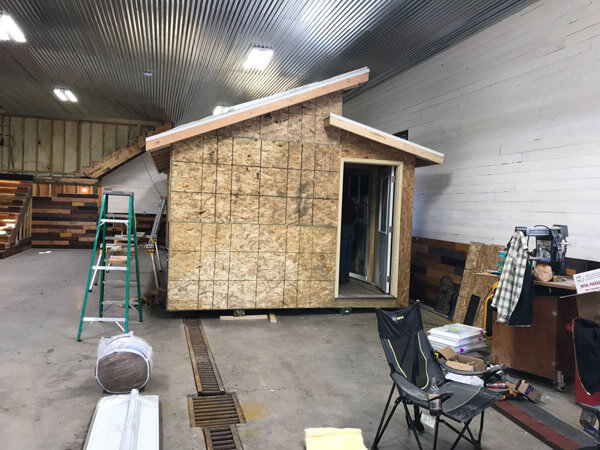

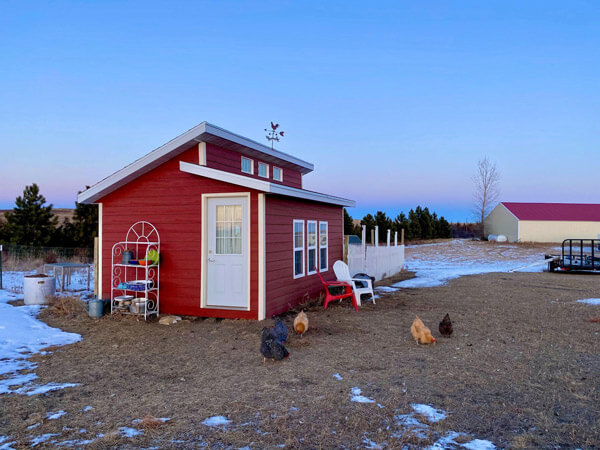
The following year a friend from our volunteer committee for Rocky Mountain Elk foundation built us a chicken coop that provided the kind of housing I could function with.
Ventilation, electricity, a wall of windows that opened up for fresh air and coop cleaning, an automatic door that closed at night, and an area for the feed supply and other chicken supplies.
I designed it and I love it!!!
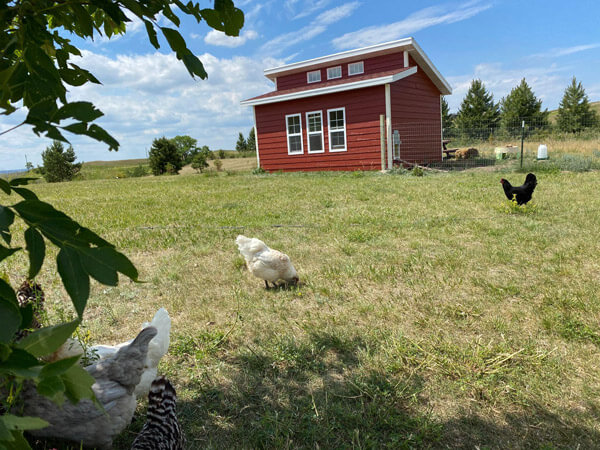
So; when the “ let’s start small and see how it goes” statement came out of Denny’s mouth I reminded him of the MOUSE in our HOUSE disaster.
We checked into drilling a well. That was $50 a foot and the water according to our neighbor that had a well was over 400’ feet deep.
We spoke to another neighbor that had a well and was high in sodium. He suggested doing what our other neighbor did and bore straight into the house through the cement of your basement wall and tap into the water there.
We did not.
We ended choosing the 3rd bid for boring straight from the water source and piping it directly to the pole barn. They arrived and said they could give us a bid in a few days and I asked when they would be able to DO THE WORK. They said that if we chose them to do it and accepted the bid that they could do it the very next week. We got the bid in 2 days and agreed to it.
We needed to get this done so we could get on with the fencing.
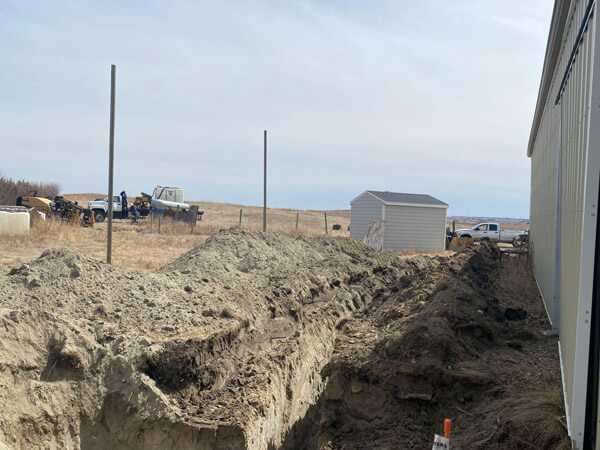


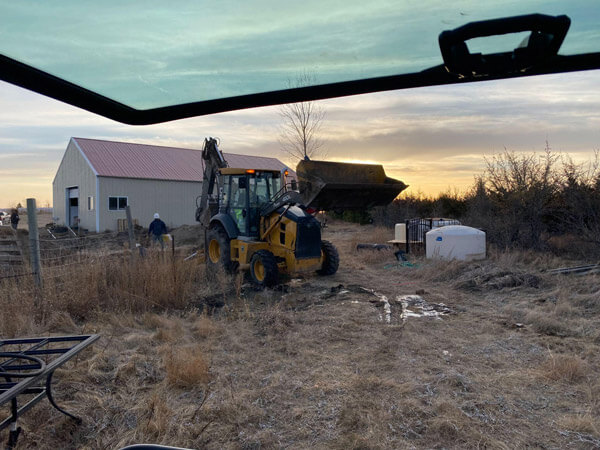
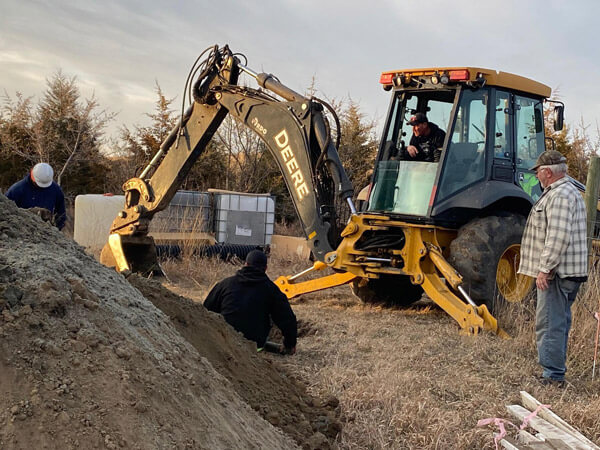
In the end, we agreed to place a hydrant in one corner inside the pole barn, another hydrant outside near the front gate and the overhead door of the pole barn, and we put in the infrastructure for a JUG auto-waterer in the loafing area. The JUG auto waterer we purchased has 2 fountains. One side will be for the billy goats and the other side will be for the does. We went online to make sure we had all the parts as we purchased the fountain at Runnings locally. I knew there was something more that was needed as the diagram clearly showed a long tube underneath the JUG. The boring company was arriving Wednesday.
It was Good Friday and we needed to get this tube thing a ma jig ASAP. We were able to figure out that we needed 8’ to keep it below the frost line and the tube came in 4’ sections with a coupler to attach the 2 sections. I called the company and asked if they had such an item. They did. We ordered it. It arrived Tuesday.
The company we were able to get the Jug’s insulated earth tube and coupler from was BAKKO Industries out of Glenwood Minnesota. The Boring company was all about digging deep holes and they knew just what to do with the thermal tubing. Of course, having the diagram available for them helped too. They were here for 2 days. I thought we had a mini-city going in. Any child that is amazed by trucks and big digging equipment would have been in their own private Disneyland as they looked out our living room window!

As of Friday, we have 2 working hydrants and the waterline ready to hook into the JUG fountain.
All and all to get water to our pole barn and have the 2 hydrants and the info structure installed for the JUG was $10,000.00
There was a crew of about 8 guys. By the time they all left one wanted the Honda Shadow motorcycle, one wanted the old chevy farm truck and one wanted the old Jimmy. All 3 were items we wanted to sell and have off our farm! So far one of the items has been taken away and the buyer even came back with his wife and helped install the fence posts!!!!
UPDATE: We are now going through our 2nd North Dakota winter. The automatic water dispenser has not failed us. Water remains liquid throughout the coldest temps.
We have plenty of electric outlets in the barn and electric water buckets do the trick for extreme cold and windy days when we know the herd is just not going to want to venture outside or when we simply close their exit door to the outside.
With the inside hydrant; keeping the 2 areas in fresh water is a very quick and easy chore.
Just the way I planned it!
For the temporary pastures that we needed to have to further divide the herd, we strung electric extension cords and plugged in a water heater to keep the water tank liquid. Normally, these areas are used in the summer and we have a water hose connected to our house that is easily turned on to fill the tank.
